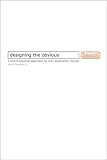I’m not normally one to agree with Jakob Nielsen, but he really hit the nail on the head with his fresh rant panning Windows 8. He has seven main complaints, from the “double desktop” inconsistency and low information density to the overly flat UI making it difficult to determine what is and isn’t an interactive element.
I’ve long thought that the split between the Desktop and Metro UIs would confuse newbies, though perhaps not so badly as the ARM/x86 issue. A lot of the people who ran out and bought the Surface tablet will probably be irritated when they learn that their x86 software won’t run on it, since the binaries are incompatible with the ARM architecture.
It’s an interesting read.
Windows 8 — Disappointing Usability for Both Novice and Power Users [UseIt]

 I recently came a across a mention online of
I recently came a across a mention online of 








